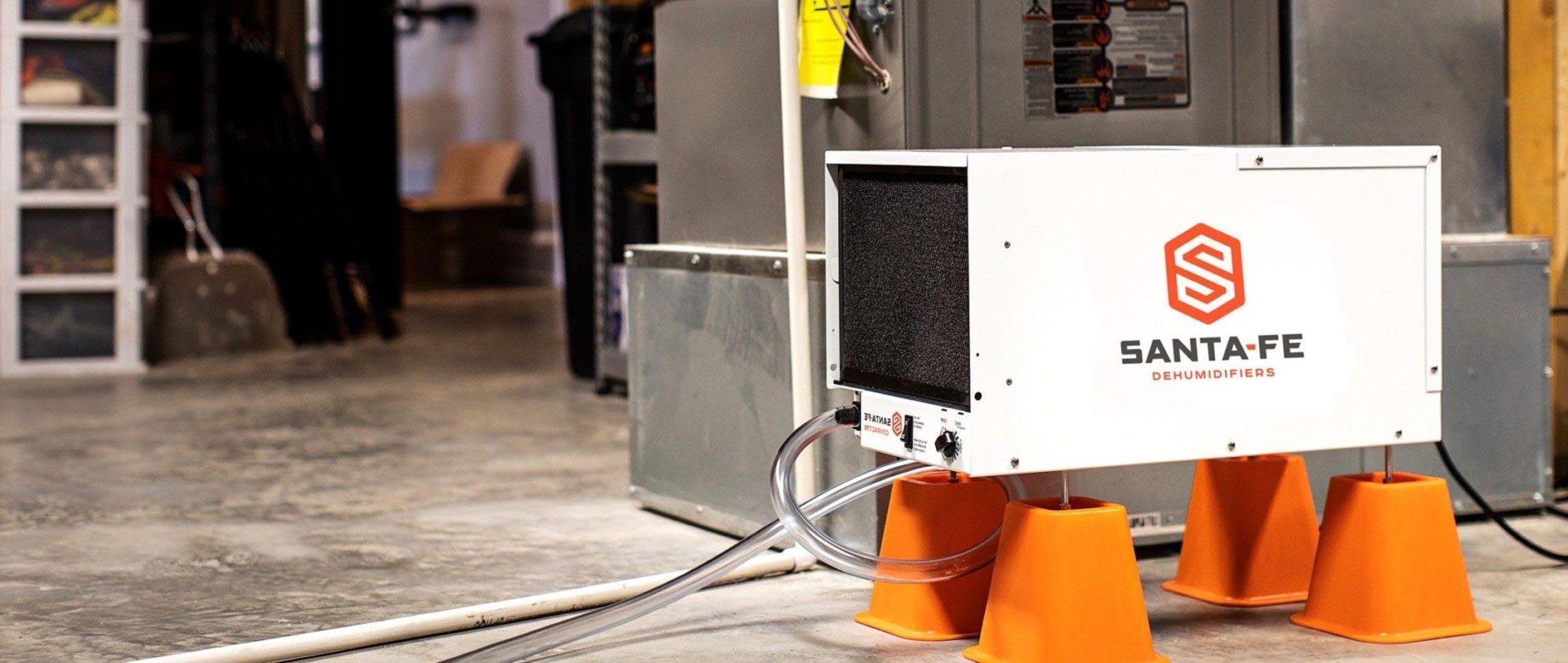

Articles
When To Use Dehumidifier In Basement
Modified: January 18, 2024
Discover when to use a dehumidifier in your basement with our informative articles. Prevent moisture and mold damage for a healthier living space.
(Many of the links in this article redirect to a specific reviewed product. Your purchase of these products through affiliate links helps to generate commission for Storables.com, at no extra cost. Learn more)
Introduction
Basements are an essential part of many homes, serving as valuable space for storage, recreation, or additional living areas. However, they can also be prone to certain issues, including high humidity. Excessive moisture in the basement can lead to various problems, from musty odors and mold growth to the deterioration of building materials.
One effective way to combat high humidity in the basement is by using a dehumidifier. A dehumidifier is a device designed to remove excess moisture from the air, helping to create a more comfortable and healthier living environment.
In this article, we will explore the importance of managing basement humidity and discuss when it is necessary to use a dehumidifier. We will also delve into the benefits of using a dehumidifier in the basement, factors to consider when purchasing one, how to properly use it, and maintenance tips to ensure its longevity.
Whether you have noticed signs of excessive humidity in your basement or you want to take preventive measures to keep it dry, understanding when and how to use a dehumidifier will be vital in maintaining a clean and safe space. So, let’s dive in and explore the world of basement dehumidification.
Key Takeaways:
- Combat high basement humidity by using a dehumidifier to prevent mold growth, structural damage, and poor air quality, creating a healthier living environment.
- When choosing a dehumidifier, consider factors like basement size, humidity levels, noise, and drainage options to ensure optimal performance and effectiveness in controlling moisture.
Read more: When To Use A Dehumidifier
Understanding Basement Humidity
Before exploring the benefits and usage of a dehumidifier in the basement, it is important to understand what basement humidity is and how it occurs. Humidity refers to the amount of moisture or water vapor present in the air. It is typically measured as a percentage, known as relative humidity (RH).
Basements tend to have higher levels of humidity compared to other parts of the house due to various reasons. One major factor is the location of the basement, usually below ground level. This makes basements more susceptible to moisture infiltration from the ground, especially if the foundation is not adequately sealed or waterproofed.
In addition to that, improper ventilation, lack of insulation, and poor drainage systems can contribute to high humidity levels in the basement. Increased humidity can also result from activities such as cooking, showering, or doing laundry, as the moisture spreads throughout the house and eventually settles in the basement.
Furthermore, basements typically have cooler temperatures compared to the rest of the house, causing warm, humid air from the upper levels to condense when it reaches the basement. This condensation can then lead to water damage, mold growth, and a host of other issues if left unaddressed.
Monitoring the humidity levels in the basement is crucial to ensure a dry and comfortable environment. In general, it is recommended to maintain the relative humidity between 30% and 50% to prevent condensation and inhibit the growth of mold and mildew.
By understanding the underlying factors that contribute to basement humidity, you can take appropriate measures to mitigate the problem. This is where a dehumidifier can play a vital role in creating a healthier and more pleasant basement environment.
Signs of Excessive Basement Humidity
Excessive basement humidity can lead to various problems if not addressed promptly. It is important to recognize the signs that indicate high humidity levels in order to take the necessary steps to mitigate the issue. Here are some common signs of excessive basement humidity:
- Musty Odors: One of the first signs of high humidity in the basement is a musty or damp smell. This odor is often a result of mold and mildew growth, which thrive in moist conditions. If you notice a persistent musty smell in your basement, it is a clear indication of excessive humidity.
- Visible Mold or Mildew: Excessive moisture in the basement can lead to the growth of mold and mildew on surfaces such as walls, ceilings, and floors. These fungal growths not only contribute to poor air quality but can also cause damage to the structural integrity of your basement over time. If you spot any signs of mold or mildew, it is crucial to address the humidity issue promptly.
- Condensation: Another visible sign of high humidity in the basement is the presence of condensation on windows, pipes, or walls. Condensation occurs when warm, humid air comes into contact with cooler surfaces and is unable to hold its moisture. If you consistently notice droplets or water pooling on surfaces, it indicates that your basement requires humidity control.
- Warped or Damaged Materials: Excessive moisture in the basement can cause damage to various materials, including wood, drywall, and upholstery. Warped or buckled floorboards, peeling paint, or crumbling walls are all indications of prolonged exposure to high humidity levels. If left unaddressed, this can result in costly repairs and compromised structural integrity.
- Increase in Allergy or Asthma Symptoms: High humidity levels in the basement can exacerbate respiratory issues such as allergies or asthma. Mold spores and dust mites thrive in moist environments and can trigger allergic reactions or respiratory distress. If you or your family members experience an increase in allergy or asthma symptoms when spending time in the basement, it may be due to excessive humidity.
Identifying these signs of excessive basement humidity will help you take appropriate actions to prevent further damage and create a healthier living space. Introducing a dehumidifier can play a significant role in controlling humidity levels and mitigating associated problems.
Potential Consequences of High Basement Humidity
High humidity levels in the basement can have detrimental effects on both your health and the integrity of your home. Understanding the potential consequences of excessive basement humidity is crucial in order to take proactive measures to address the issue. Here are some of the possible consequences:
- Mold and Mildew Growth: Excessive moisture provides the perfect breeding ground for mold and mildew. These fungi can quickly spread and colonize surfaces, leading to unsightly stains, unpleasant odors, and potential health risks. Prolonged exposure to mold spores can cause respiratory issues, allergic reactions, and in severe cases, even respiratory infections.
- Structural Damage: Continuous exposure to high humidity can cause structural damage to your basement. Moisture can gradually seep into the walls, flooring, and support beams, leading to rotting, warping, and weakening of these materials. This can compromise the structural integrity of your home and require costly repairs.
- Damage to Belongings: High humidity in the basement can damage your stored belongings and valuables. Moisture can cause books, documents, clothing, and electronics to warp, mold, or become irreparably damaged. This can result in significant financial loss and the loss of sentimental items.
- Pest Infestations: Excessive humidity can attract pests such as dust mites, cockroaches, and silverfish. These pests thrive in damp environments and can cause further damage to your basement and its contents. Additionally, pests and insects can trigger allergies and spread diseases, posing a health risk to you and your family.
- Poor Indoor Air Quality: High levels of humidity in the basement can contribute to poor indoor air quality throughout your home. The damp, musty air can circulate through the HVAC system, spreading mold spores and allergens throughout the house. This can potentially trigger respiratory issues, allergies, and other health problems.
It is important to address high basement humidity promptly to prevent these consequences from occurring. Using a dehumidifier in your basement is an effective way to control the moisture levels, improve air quality, protect your home, and safeguard your health.
When to Consider Using a Dehumidifier in the Basement
Using a dehumidifier in the basement can be highly beneficial in controlling humidity levels and preventing associated problems. However, it’s important to know when to consider using a dehumidifier. Here are some situations that indicate the need for a dehumidifier in your basement:
- Excessive Moisture: If you notice condensation on windows, walls, or pipes in your basement, it’s a clear sign of excessive moisture. Condensation occurs when warm, humid air comes into contact with cooler surfaces, leading to the formation of water droplets. A dehumidifier can help remove this excess moisture from the air, preventing condensation and reducing the risk of mold and mildew growth.
- Musty Odors: If your basement has a persistent musty smell, it is likely due to the presence of mold and mildew. These fungi thrive in damp environments and release unpleasant odors. Using a dehumidifier can help remove the excess moisture that mold and mildew need to thrive, effectively eliminating the musty smell and creating a fresher environment.
- Mold or Mildew Growth: If you notice visible signs of mold or mildew growth in your basement, it is essential to address the underlying humidity issue. Mold can cause structural damage and pose health risks. By using a dehumidifier, you can reduce humidity levels and inhibit the growth of mold and mildew.
- Health Issues: High humidity levels in the basement can negatively impact indoor air quality, leading to respiratory issues, allergies, and other health problems. If you or your family members experience frequent allergies, asthma flare-ups, or respiratory symptoms when spending time in the basement, it may be a result of high humidity. A dehumidifier can help improve indoor air quality by reducing excess moisture and allergen levels.
- Preventing Damage: Using a dehumidifier in the basement as a preventative measure is also recommended. By maintaining optimal humidity levels, you can protect your home and belongings from potential damage caused by mold, mildew, and rotting. This can save you from costly repairs and replacements in the future.
It’s important to assess the specific humidity conditions in your basement and determine if they warrant the use of a dehumidifier. Monitoring relative humidity levels with a hygrometer can help you make an informed decision about whether or not to introduce a dehumidifier to regulate the moisture in your basement.
Remember, prevention is key when it comes to basement humidity. By using a dehumidifier, you can create a comfortable and healthy living environment while safeguarding your home and family from the potential problems associated with high basement humidity.
Read more: How To Use Dehumidifier For Basement
Benefits of Using a Dehumidifier in the Basement
Using a dehumidifier in the basement can provide numerous benefits, ranging from improved comfort to a healthier living environment. Here are some key advantages of using a dehumidifier in the basement:
- Controls Humidity Levels: The primary benefit of using a dehumidifier is the ability to control and maintain optimal humidity levels in the basement. By removing excess moisture from the air, a dehumidifier helps prevent condensation, mold growth, and the associated problems that come with high humidity.
- Prevents Mold and Mildew: Mold and mildew thrive in damp environments. By reducing the moisture in the basement, a dehumidifier effectively inhibits the growth of mold and mildew. This not only prevents unsightly stains and odors but also protects your home from structural damage and safeguards your health from respiratory issues caused by mold spores.
- Improves Air Quality: High humidity levels can lead to poor indoor air quality, as moisture can contribute to the circulation of allergens and irritants. A dehumidifier helps remove these pollutants from the air, resulting in cleaner and healthier indoor air. This is especially beneficial for individuals with allergies, asthma, or other respiratory conditions.
- Reduces Pest Infestations: Pests such as dust mites, cockroaches, and silverfish are attracted to damp and humid environments. By using a dehumidifier to maintain lower humidity levels in the basement, you can discourage pest infestations and prevent damage to your property and belongings caused by these unwanted guests.
- Protects Belongings: Excessive moisture in the basement can lead to damage to your stored belongings, including books, clothing, electronics, and furniture. By controlling humidity with a dehumidifier, you can protect your valuable possessions from warping, mold, and other moisture-related damages.
- Prevents Structural Damage: Prolonged exposure to high humidity can cause structural damage to your basement. Moisture can weaken and deteriorate building materials, leading to rotting, warping, and compromised structural integrity. A dehumidifier helps prevent these issues by keeping humidity levels in check.
- Enhances Energy Efficiency: Excessive humidity can make your HVAC system work harder to maintain a comfortable temperature. By reducing moisture levels with a dehumidifier, you can lighten the load on your cooling system, resulting in energy savings and improved energy efficiency.
- Reduces Musty Odors: Musty odors in the basement are often a result of mold and mildew growth. By controlling humidity with a dehumidifier, you can eliminate these odors, creating a fresher and more pleasant environment.
Overall, using a dehumidifier in the basement offers a range of benefits, from improved indoor air quality and protection against mold growth to preserving the structural integrity of your home and safeguarding your belongings. It’s an investment that pays off in the form of a more comfortable, healthier, and better-protected living space.
Use a dehumidifier in the basement when you notice musty odors, dampness, or mold growth. This will help prevent moisture-related issues and improve air quality.
Factors to Consider Before Purchasing a Dehumidifier
Before purchasing a dehumidifier for your basement, it’s essential to consider certain factors to ensure you choose the right model that meets your needs. Here are some key factors to consider before making a purchase:
- Basement Size: Consider the size of your basement when selecting a dehumidifier. The capacity of the dehumidifier is typically measured in pints, and it indicates how much moisture it can remove from the air within a specified time. A larger basement will require a dehumidifier with a higher capacity to effectively control humidity levels.
- Humidity Levels and Climate: Determine the average humidity levels in your basement and the climate of your area. If you live in a particularly humid region, you may need a more powerful dehumidifier to handle higher moisture levels. Some dehumidifiers have built-in humidistats that allow you to set a specific humidity level and have the device automatically switch on and off as needed.
- Noise Level: Consider the noise level produced by the dehumidifier, especially if you plan to use it in a living area or near bedrooms. Look for models that have a noise level rating suitable for your needs, especially if you prioritize a quiet environment.
- Energy Efficiency: Energy efficiency is an important factor to consider, as a dehumidifier that operates for extended periods can increase energy consumption. Look for models with an Energy Star certification, as they are designed to be more energy-efficient and can result in cost savings over time.
- Drainage Options: Dehumidifiers collect moisture in a container or bucket that needs to be emptied regularly. However, some models offer additional drainage options such as a gravity drain, where the collected water can be channeled directly into a floor drain, or a condensate pump that can pump the water out of the dehumidifier to a desired location. Consider your preferred drainage method and choose a dehumidifier that offers the appropriate option for your basement setup.
- Portability and Mobility: If you plan on moving the dehumidifier between different areas of the basement or even different rooms, consider the weight and mobility features of the unit. Look for models with wheels or handles that make it easier to transport.
- Additional Features: Some dehumidifiers come with additional features such as adjustable fan speeds, digital control panels, programmable timers, automatic defrost, and air purifying functionalities. Consider which features are important to you and align with your specific needs.
- Budget: Lastly, consider your budget when choosing a dehumidifier. Prices can vary based on the model, brand, capacity, and included features. It’s important to find a balance between your budget and the functionality you require.
By taking these factors into account, you can make an informed decision when purchasing a dehumidifier for your basement, ensuring that it effectively meets your requirements and helps create a comfortable and healthier living space.
Tips for Choosing the Right Dehumidifier for Your Basement
Choosing the right dehumidifier for your basement is essential to ensure effective moisture control and a healthier living environment. Here are some tips to help you select the right dehumidifier:
- Calculate the Size: Determine the square footage of your basement to estimate the appropriate capacity of the dehumidifier you’ll need. A smaller basement may require a unit with a lower capacity, while a larger or more humid basement may require a higher capacity dehumidifier.
- Consider the Humidity Level: Take into account the average humidity levels in your area and basement. If you live in a humid region or your basement tends to have high humidity levels, choose a dehumidifier with a higher moisture removal capacity or one that offers settings to target specific humidity levels.
- Noise Level: Consider the noise level of the dehumidifier, especially if you plan to use it in living areas or near bedrooms. Look for units with lower decibel ratings or quiet modes if noise is a concern for you.
- Energy Efficiency: Look for dehumidifiers with an Energy Star certification, as they are designed to be more energy-efficient and can help reduce electricity costs. Energy-efficient models use less power while still effectively removing moisture from the air.
- Drainage Options: Determine your preferred drainage method. If you don’t mind regularly emptying a water collection tank, a unit with a built-in bucket may suffice. Alternatively, consider a dehumidifier with a direct drain option or the ability to connect to a hose for continuous drainage into a floor drain or sink.
- Consider Built-in Features: Look for additional features that enhance functionality and convenience. These may include adjustable fan speeds, digital control panels, programmable timers, auto-restart after power outages, automatic defrost for cold climates, and air purifying functions.
- Maintenance and Cleaning: Consider the ease of maintenance and cleaning. Look for dehumidifiers with accessible filters that are easy to clean or replace. Removable and washable filters are convenient and can help improve air quality.
- Portability: If you anticipate moving the dehumidifier between rooms or areas, consider a unit with handles or wheels for easier mobility.
- Read Reviews and Comparisons: Before making a final decision, read customer reviews and compare different models. This will give you insights into the experiences of other users and help you make an informed choice.
- Set a Budget: Determine your budget range and look for dehumidifiers that offer the best combination of features, performance, and durability within your price range.
By considering these tips, you can choose a dehumidifier that suits your specific needs, effectively controls basement humidity, and helps create a healthier and more comfortable living environment.
How to Properly Use a Dehumidifier in the Basement
Using a dehumidifier in the basement is an effective way to control moisture levels and create a more comfortable living space. Here are some steps to properly use a dehumidifier in your basement:
- Positioning: Place the dehumidifier in a central location in your basement, away from walls and furniture to ensure proper air circulation. Make sure there is at least a foot of clearance around the unit for optimal air intake and output.
- Leveling: Ensure that the dehumidifier is placed on a level surface to avoid any water leakage. Use leveling feet or adjusters if necessary.
- Power Source: Plug the dehumidifier into a suitable power outlet. Avoid using extension cords, as they may not be capable of handling the electrical load required by the unit.
- Settings: Set the desired humidity level on the dehumidifier. A humidity level between 30% and 50% is generally recommended for basements. Some models have built-in humidistats that allow you to set and maintain a specific humidity level, while others have a manual humidity setting knob.
- Fan Speed: Adjust the fan speed based on your preferences and the humidity levels in your basement. Higher fan speeds can help circulate the air more quickly, but lower speeds may reduce noise and energy consumption.
- Drainage: If your dehumidifier has a collection tank, ensure it is properly positioned and securely attached. Empty the collection tank regularly to prevent overflow and potential water damage. If your dehumidifier has a direct drain or continuous drainage option, use it to avoid the need for manual emptying. Ensure that the drain hose is properly connected and directed to a suitable drain or sink.
- Monitor and Adjust: Regularly monitor the humidity levels in your basement using a hygrometer or the built-in humidity display on the dehumidifier. Adjust the settings as necessary to maintain the desired humidity level and ensure optimal performance.
- Clean and Maintain: Follow the manufacturer’s instructions for cleaning and maintaining your dehumidifier. Regularly clean or replace the air filter to ensure proper airflow and prevent the buildup of dust, allergens, and contaminants. Clean the exterior of the unit as needed to remove dust and debris.
- Inspect and Address Issues: Periodically inspect the dehumidifier for any signs of damage, leaks, or unusual noises. If you notice any issues, discontinue use and consult the manufacturer’s instructions or contact customer support for assistance.
- Regular Maintenance: Schedule regular maintenance tasks such as cleaning the dehumidifier, checking for clogs, and inspecting the drain hose for any blockages or leaks. This will help ensure the longevity and optimal performance of your dehumidifier.
By following these steps and properly using and maintaining your dehumidifier, you can effectively control humidity levels in your basement, mitigate moisture-related issues, and create a more comfortable and healthier living space.
Read more: What Is The Best Dehumidifier For Basement
Maintenance and Care for Your Basement Dehumidifier
Maintaining and caring for your basement dehumidifier is essential to ensure its optimal performance, longevity, and effectiveness in controlling humidity. Here are some maintenance tips to keep your dehumidifier in top condition:
- Clean or Replace the Air Filter: Regularly clean or replace the air filter according to the manufacturer’s instructions. Dust, debris, and other particles can accumulate on the filter, hindering airflow and reducing the dehumidifier’s efficiency. A clean filter ensures proper air circulation and improves air quality.
- Inspect for Damage and Leaks: Periodically inspect the dehumidifier for any signs of damage, including cracks, leaks, and loose connections. Pay attention to the water collection tank, drain hose, and power cord. If any damage is detected, discontinue use and consult the manufacturer’s instructions or contact customer support for assistance.
- Clean the Water Collection Tank: If your dehumidifier has a collection tank, regularly empty and clean it to prevent the growth of bacteria and mold. Use warm soapy water to clean the tank thoroughly and rinse it before reinstalling it. A clean tank reduces the risk of unpleasant odors and ensures proper functioning.
- Clean the Exterior: Dust and debris can accumulate on the exterior of the dehumidifier, hindering its performance and potentially causing overheating. Wipe down the exterior surfaces regularly with a damp cloth to remove any dust or dirt buildup.
- Inspect and Clean the Coils: Over time, the coils in the dehumidifier can accumulate dirt, dust, and debris. This can affect the dehumidifier’s efficiency. Follow the manufacturer’s instructions to safely access and clean the coils. Use a soft brush or a vacuum cleaner with a brush attachment to remove any debris. Ensure the dehumidifier is turned off and unplugged before cleaning the coils.
- Check the Drainage System: If your dehumidifier has a direct drain option or a continuous drainage system, regularly inspect the drain hose for any blockages or leaks. Clear any clogs or obstructions to ensure uninterrupted drainage. Ensure the hose is properly connected and directed towards a suitable drain or sink.
- Monitor the Humidity Levels: Continuously monitor the humidity levels in your basement using a hygrometer or the built-in humidity display on the dehumidifier. Adjust the settings as necessary to maintain the desired humidity level and ensure optimal performance.
- Regular Servicing: Consider scheduling regular servicing of your dehumidifier by a professional technician. They can perform a thorough inspection, clean internal components, and address any potential issues. Regular servicing can help prolong the lifespan of your dehumidifier and ensure its optimum performance.
- Follow the Manufacturer’s Instructions: Always refer to the manufacturer’s instructions for specific maintenance and care guidelines. Different dehumidifier models may have unique requirements, so it’s important to follow the recommended procedures to maintain your specific unit.
By following these maintenance tips and caring for your basement dehumidifier, you can ensure its efficiency, longevity, and effectiveness in controlling humidity. Regular maintenance practices will help create a healthier living environment by reducing the risk of mold, improving air quality, and preserving the structural integrity of your basement.
Conclusion
Managing basement humidity is crucial for maintaining a healthy and comfortable living environment. Excessive humidity can lead to a range of problems, including mold growth, structural damage, and poor indoor air quality. Using a dehumidifier in the basement is an effective solution to control humidity levels and mitigate these issues.
In this article, we discussed the importance of understanding basement humidity and the signs that indicate excessive moisture. We explored the potential consequences of high basement humidity, highlighting the need to address the issue promptly. We also provided guidance on when to consider using a dehumidifier in the basement and outlined the numerous benefits it offers.
Before purchasing a dehumidifier, we highlighted several factors to consider, such as basement size, humidity levels, noise level, energy efficiency, drainage options, and additional features. Taking these factors into account ensures you choose the right dehumidifier for your specific needs.
We also provided tips on how to properly use and maintain a dehumidifier in the basement. Proper positioning, setting the desired humidity level, monitoring, regular cleaning, and inspection are essential steps to ensure the dehumidifier functions optimally and effectively reduces moisture levels. Performing regular maintenance and following the manufacturer’s instructions will help prolong the lifespan of the dehumidifier and maintain its efficiency over time.
In conclusion, using a dehumidifier in the basement plays a vital role in controlling humidity, preventing mold growth, and improving overall air quality. By properly selecting, placing, and maintaining a dehumidifier, you can create a healthier, more comfortable, and better-protected living environment, safeguarding both your home and your well-being.
Take the necessary steps to address basement humidity and consider investing in a dehumidifier today. Your basement will thank you with improved air quality, reduced moisture-related issues, and a more enjoyable space for you and your family.
Frequently Asked Questions about When To Use Dehumidifier In Basement
Was this page helpful?
At Storables.com, we guarantee accurate and reliable information. Our content, validated by Expert Board Contributors, is crafted following stringent Editorial Policies. We're committed to providing you with well-researched, expert-backed insights for all your informational needs.
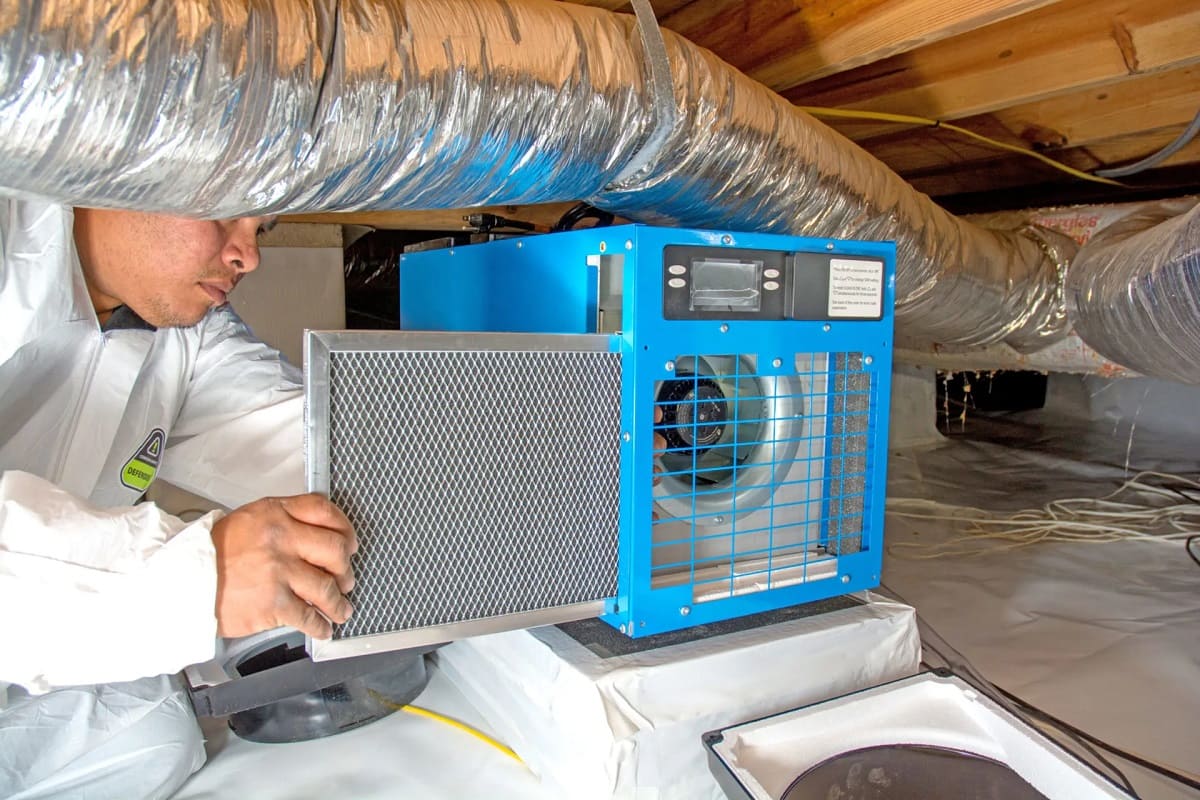
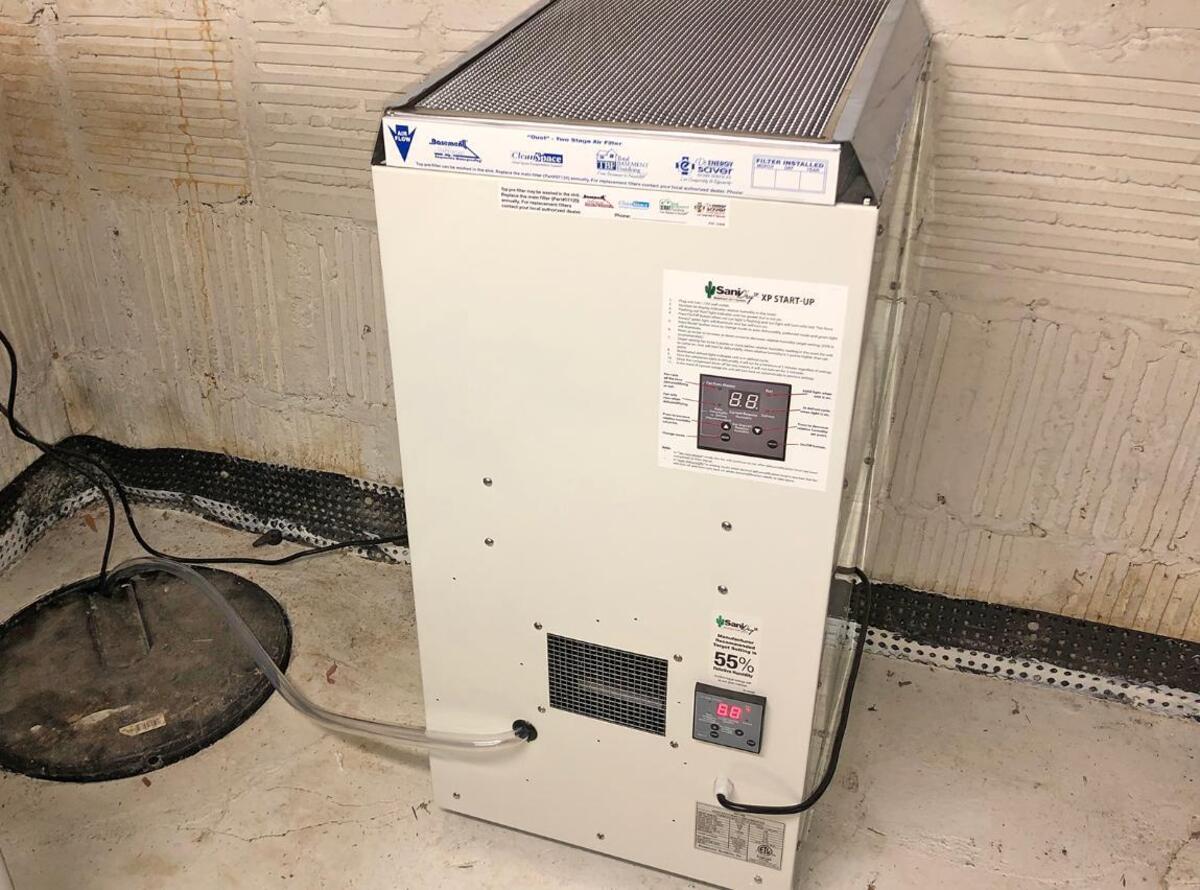
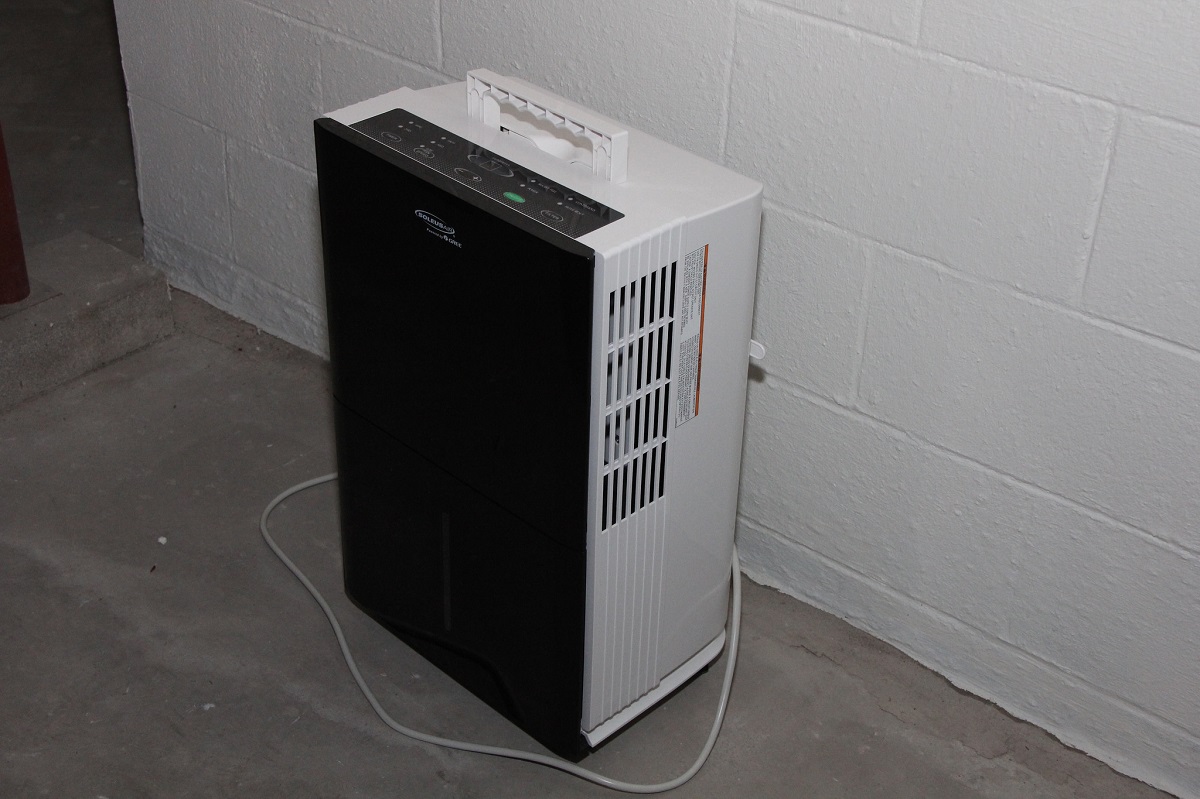
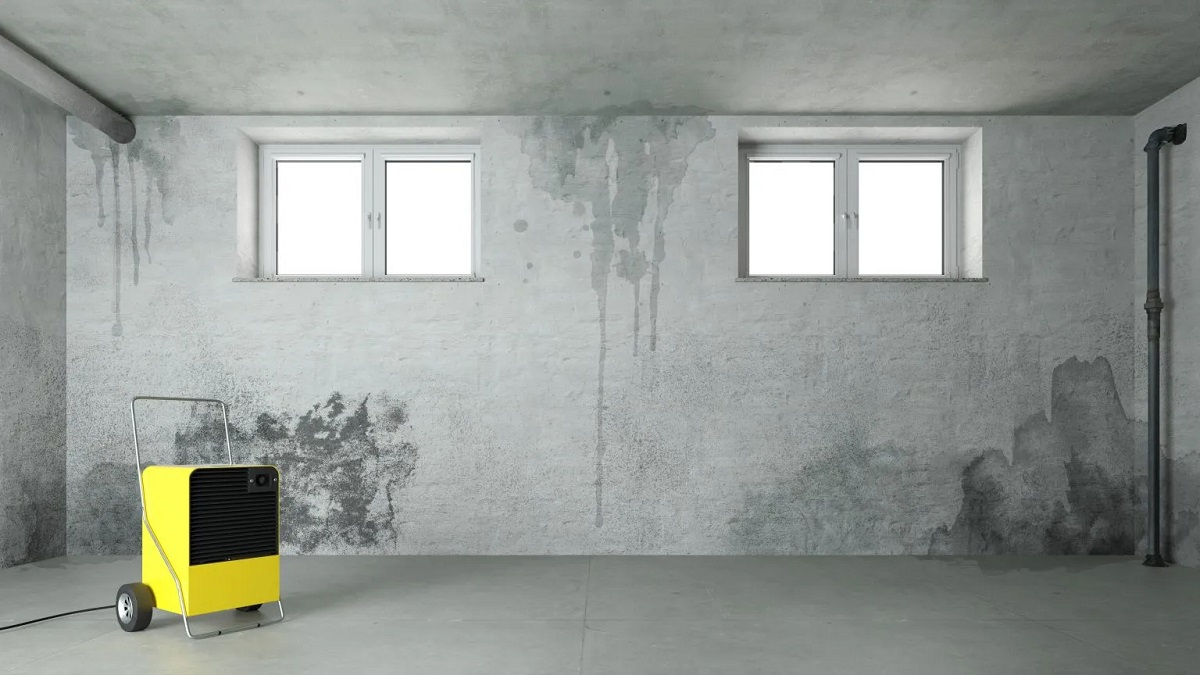
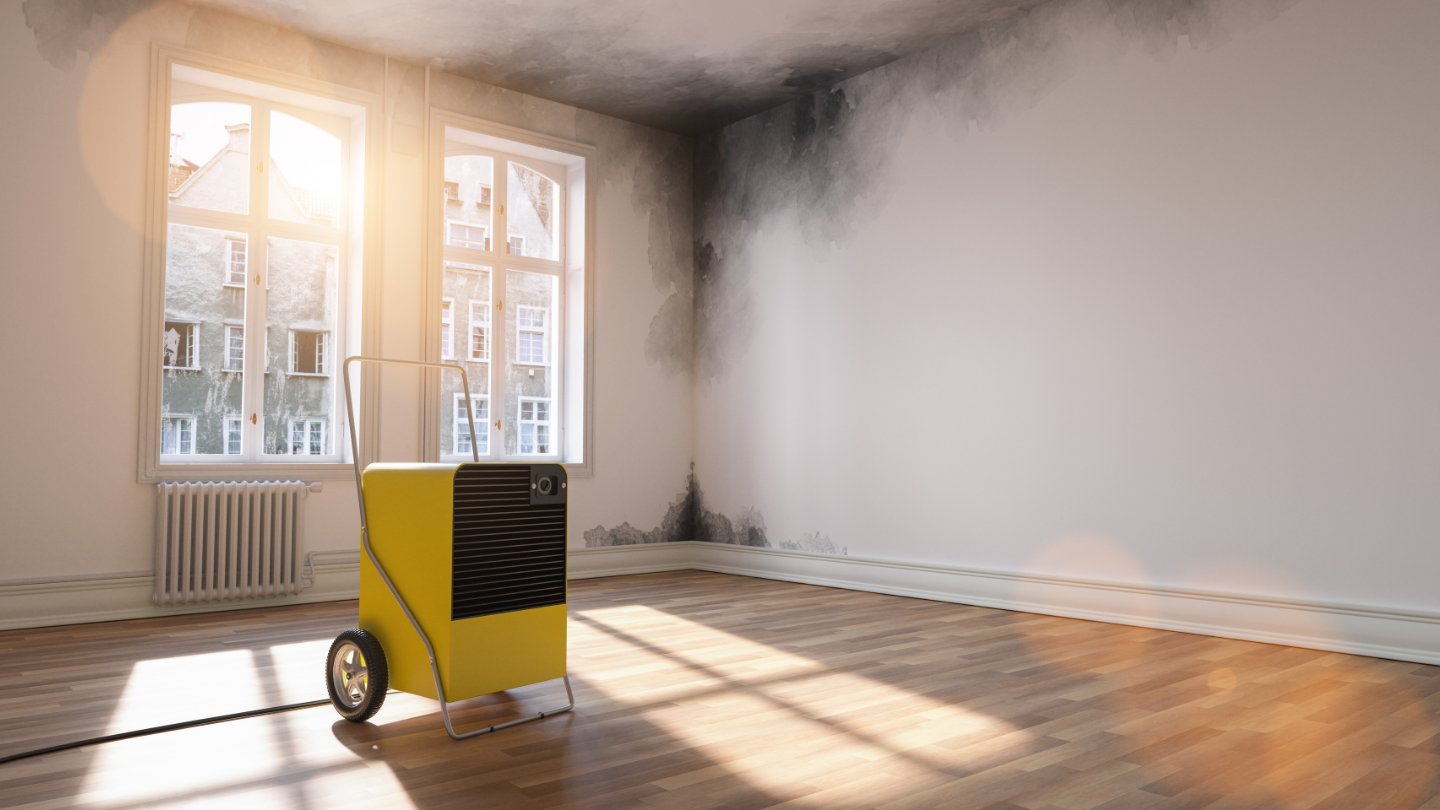

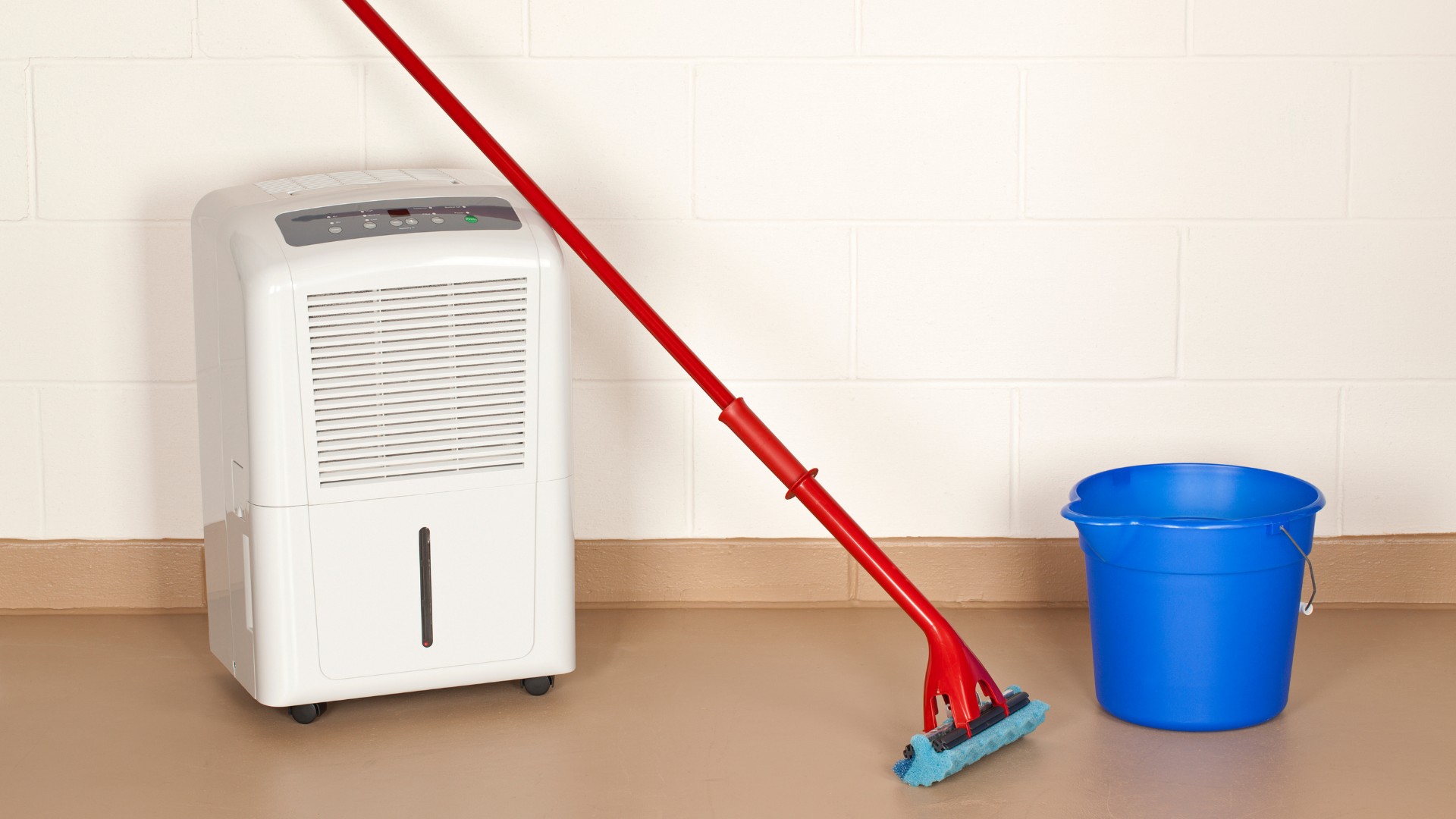
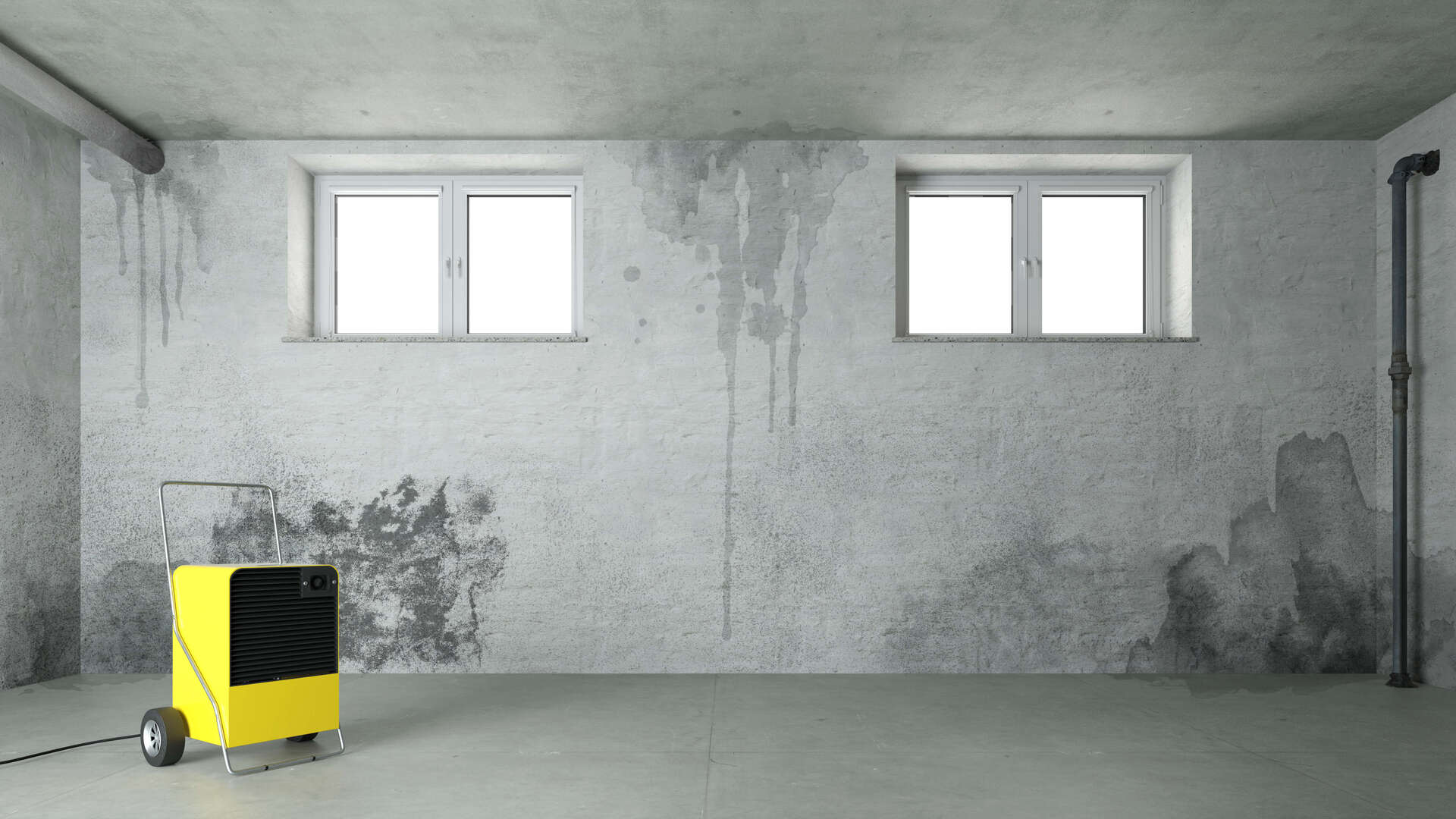
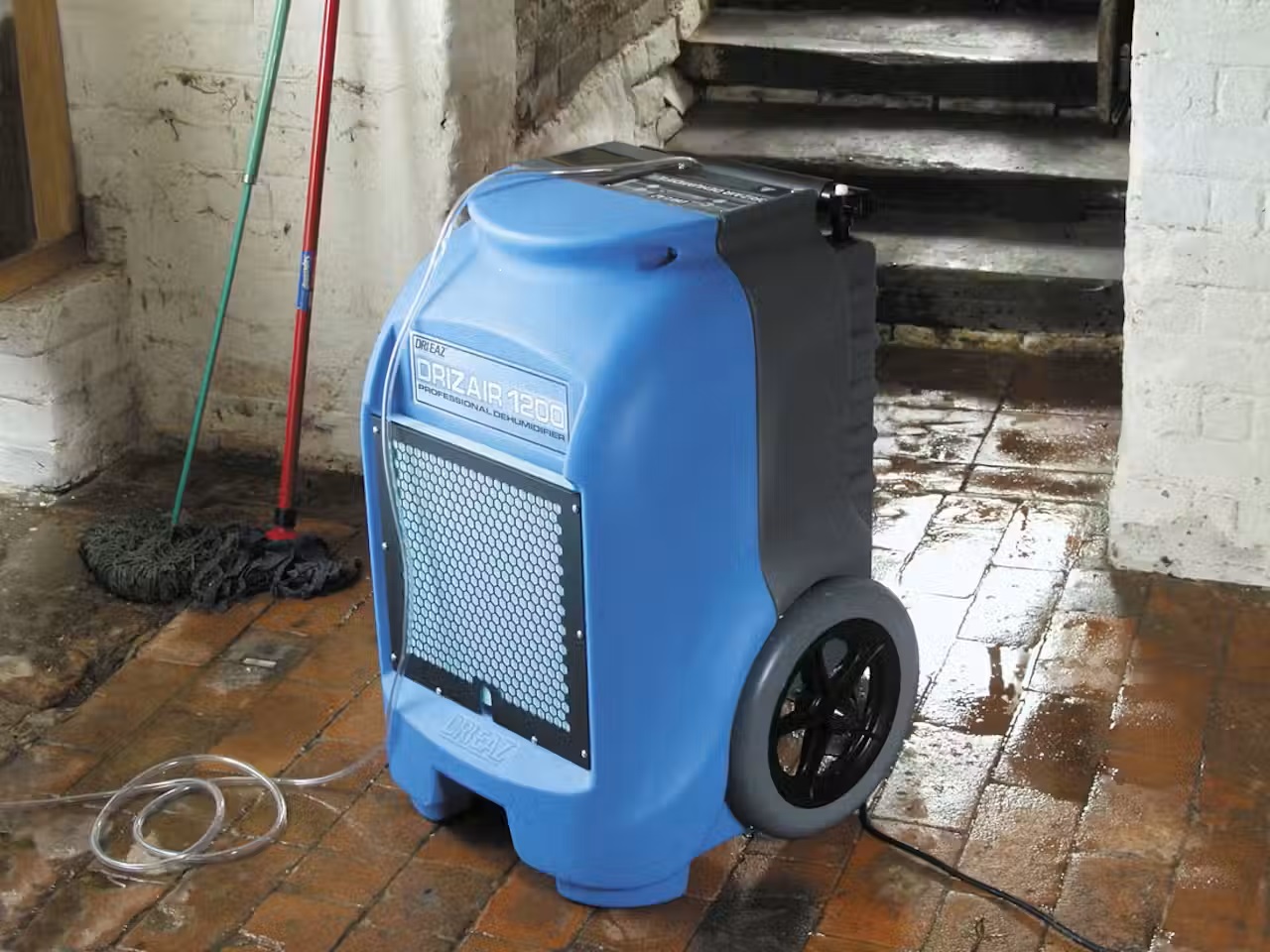
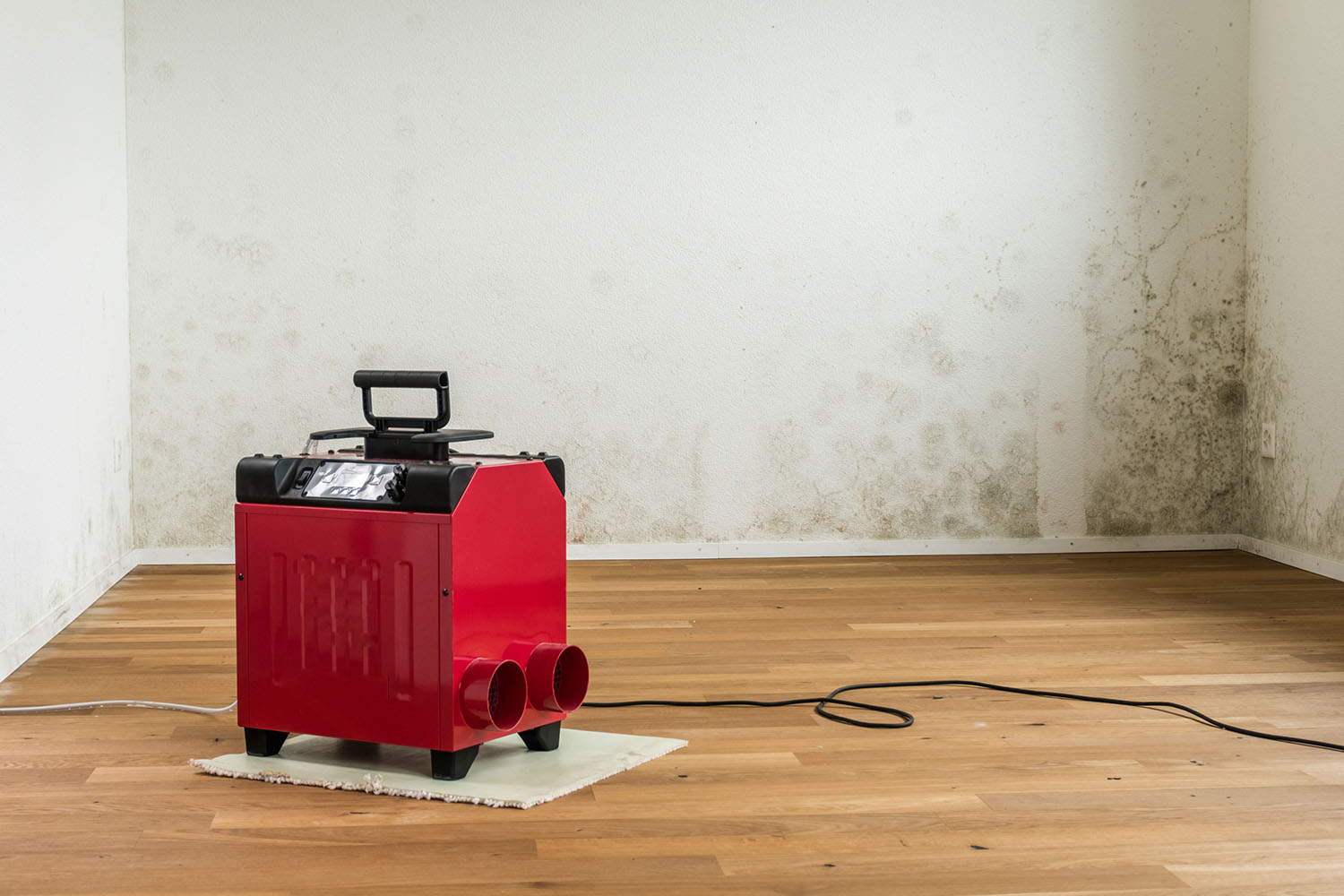

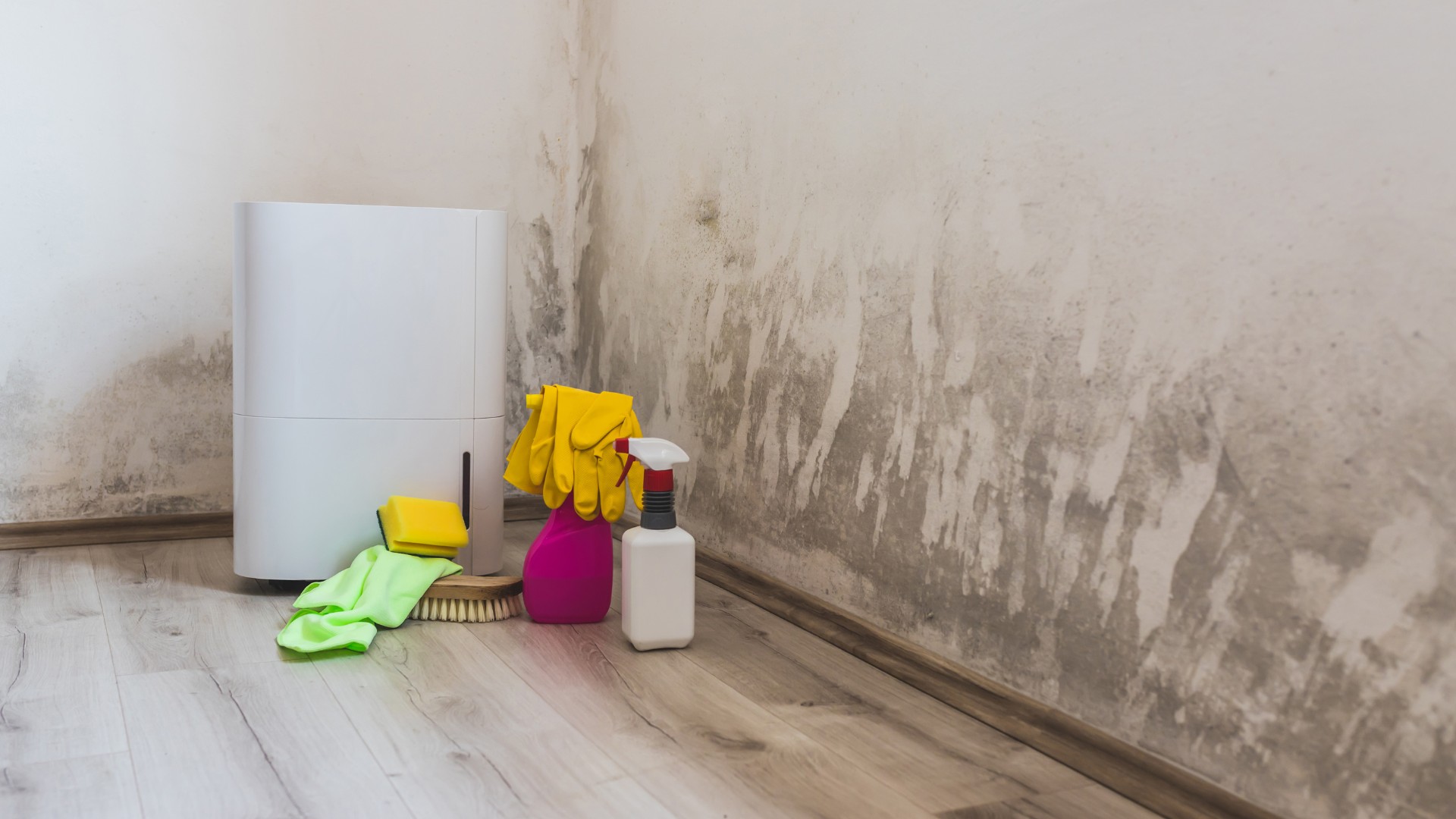
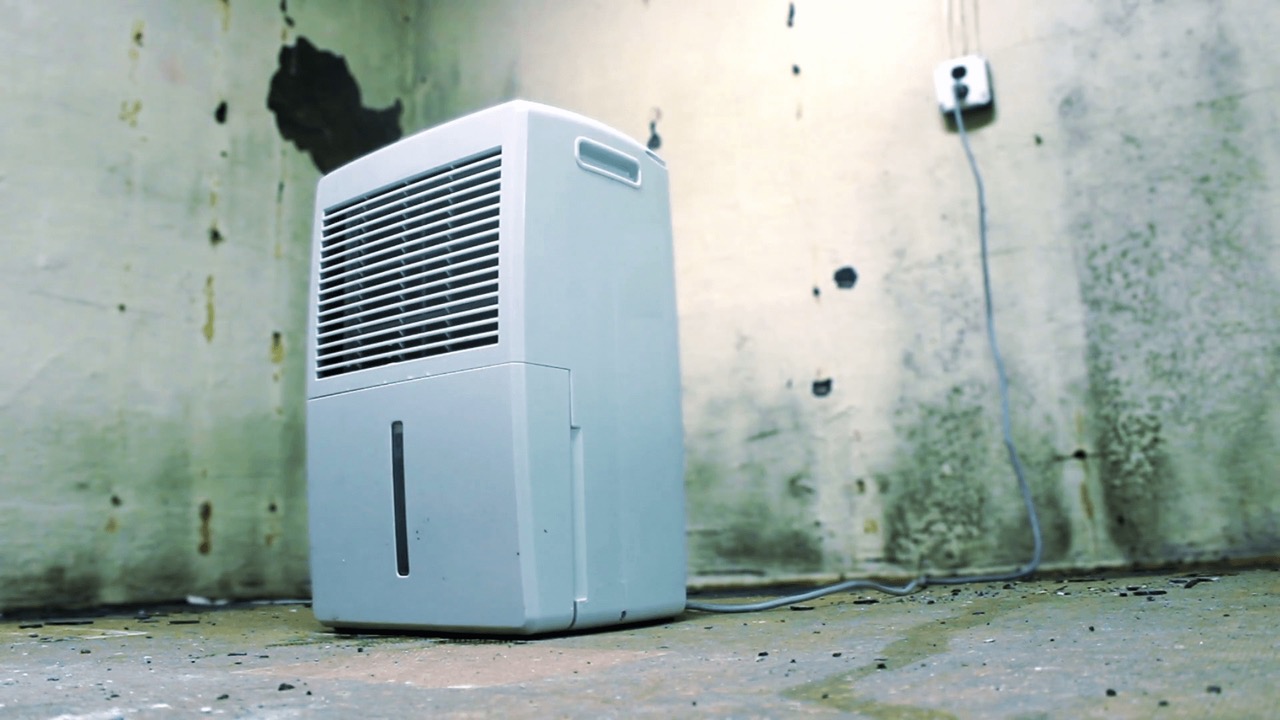

0 thoughts on “When To Use Dehumidifier In Basement”